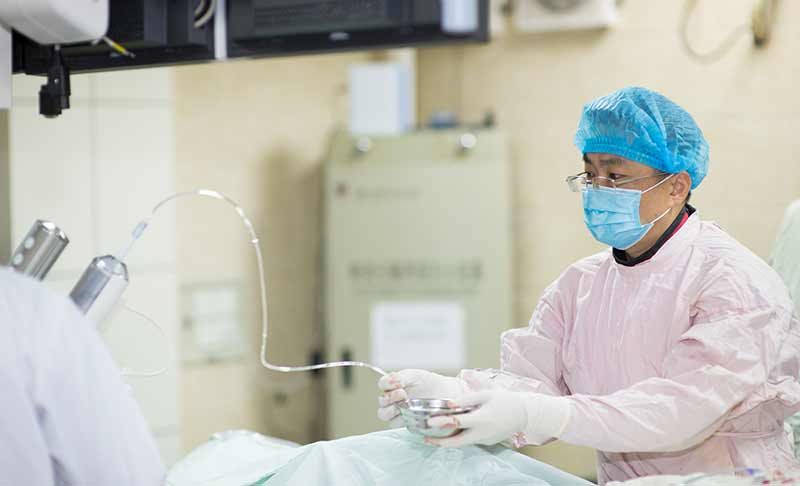Interventional Radiology
Interventional Radiology Lab
Procedures
- Minimally Invasive Lumbar Decompression (mild) Procedures for Lumbar Spinal Stenosis – Lumbar spinal stenosis (LSS) is a common condition, with more than two million patients diagnosed and in treatment nationwide each year. LSS is a narrowing of the lower spinal canal which may cause pain, numbness, or tingling in your lower back, legs or buttocks, limiting your ability to stand or walk. Usually, LSS is found in people over 50 years of age, and the likelihood of developing LSS increases as we age
- Biliary/Renal Interventions
- Carotid/Subclavian Angiogram with Intervention
- Kyphoplasty/Spine Interventional Pain Management
- Peripheral Arterial/Venous Angiogram with Intervention
- Venous Access including port-a-cath and dialysis
- Inferior Venacava Filter Insertion/Removal
- Biopsy Procedures
- • Bone Marrow
- • Thyroid
- • Liver
- • Lymph Nodes
- • Lung
- Embolization Procedures
- • Prostate
- • Bariatric Artery Embolization (BAE)
Bariatric Artery Embolization (BAE)
mild® & BAE
How mild® Works
The mild® procedure has been performed safely on thousands of patients. A doctor who is certified to perform mild® will use an imaging machine and specialized tools to remove small pieces of bone and excess ligament tissue through a tiny incision in your back. Removing these elements restores space in the spinal canal and decreases the compression of the nerves, which reduces pain and restores mobility. Some doctors have described the goal of the procedure as being similar to “removing a kink in a drinking straw.”
What You Can Expect With mild®?
• Outpatient procedure, typically performed in less than 1 hour
• Able to resume light activities within just days
• Requires:
o No general anesthesia
o No implants
o No stitches
Bariatric Artery Embolization (BAE)
As much as we wish the opposite were true, diet and exercise achieve permanent weight loss on only about 5% of patients. Weight loss (bariatric) surgery is expensive and requires a permanent alteration to our digestive system. Bariatric artery embolization (BAE) is an option gaining popularity throughout the United States. This minimally invasive procedure is designed to help people lose weight without surgery and its associated risks. ONLY 5% of patients achieve permanent weight loss from diet and exercise alone.
HORMONAL SOURCE OF WEIGHT GAIN

Everyone knows that weight gain is the result of eating more than the body burns off with daily activity. But what causes us to become hungry and eat more than we should? The stomach is made up of five areas. One of these areas, the fundus, is the “control center” for appetite stimulation. It tells the brain when we are hungry and full. The fundus produces a hormone called ghrelin, which signals hunger to the brain. Ghrelin is the most powerful hunger-stimulating hormone, and research shows that reducing the amount of ghrelin in the body can help us lose weight.
Potential side effects of the procedure are infrequent and mild, and can include nausea, vomiting, pain, inflammation and fever. While BAE is a relatively new procedure for weight loss, several clinical studies have already demonstrated its safety and effectiveness. Furthermore, a variation of this procedure has been used since the 1970s to treat gastric hemorrhages with an excellent long-term safety record. Several studies, along with our own experience, have shown that patients who undergo BAE achieve an average total body weight loss of between 15% and 20%. Our doctors were among the first on the United States to perform BAE for weight loss AND are the region’s foremost experts in this procedure.
Am I a candidate for BAE?
You may benefit from bariatric artery embolization if you:
- Have a BMI > 30
- Have not had long term success with diet and exercise
- Are experiencing other health problems due to your weight
- Wish to avoid gastric bypass surgery
- Do not intend to have future gastric sleeve surgery
Click here if you would like a consultation and/or information on any of the Interventional Radiology Procedures.

9301 Connecticut Drive, Crown Point, IN
